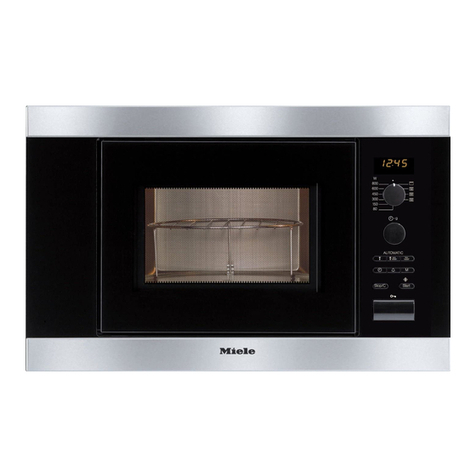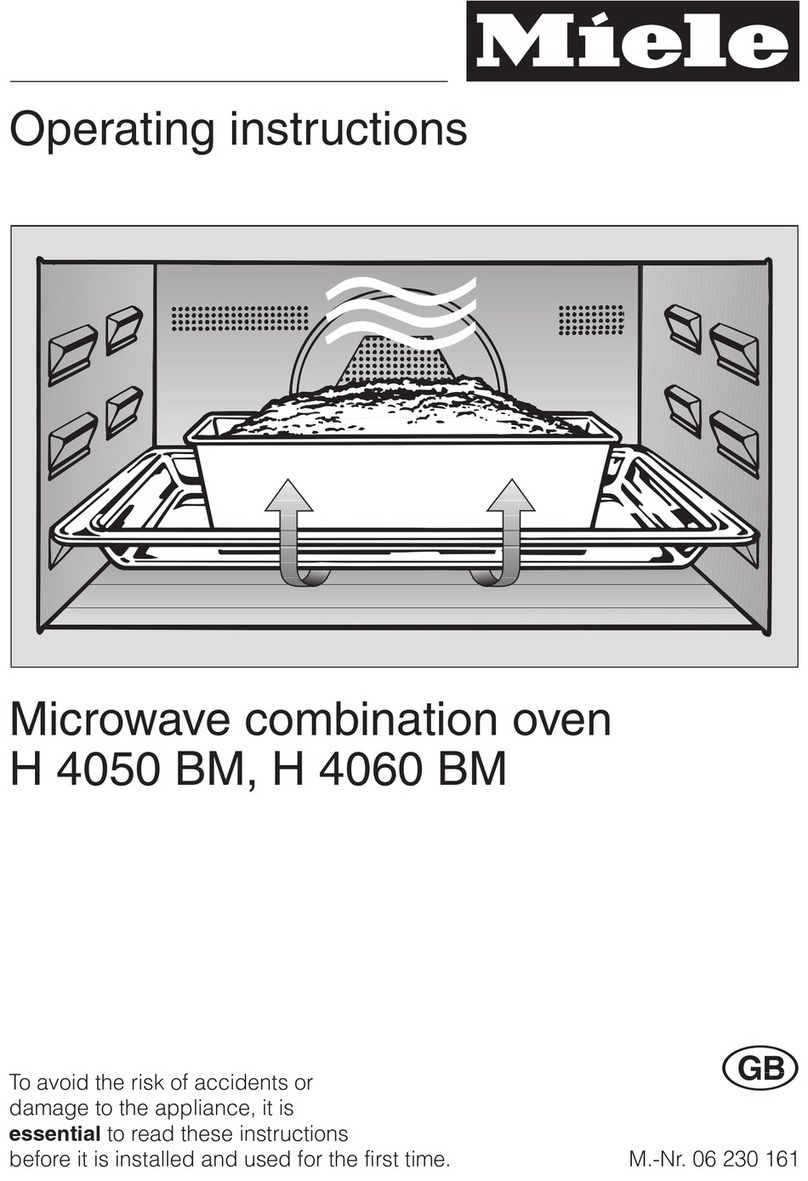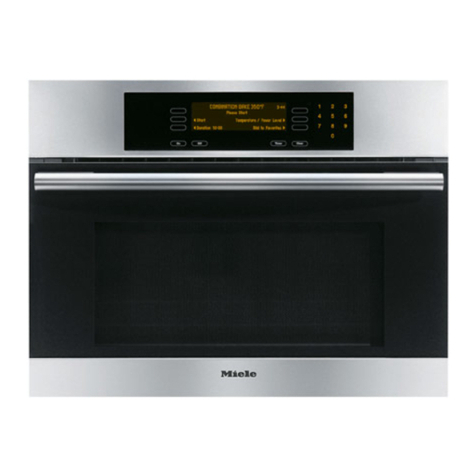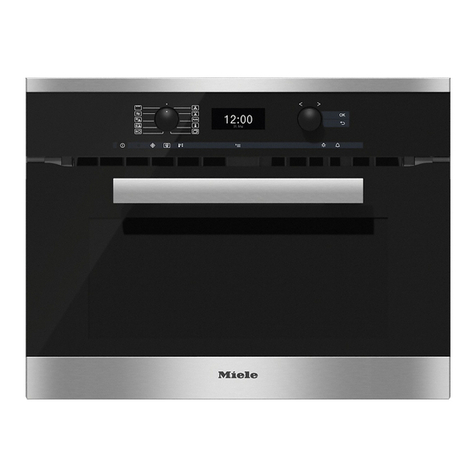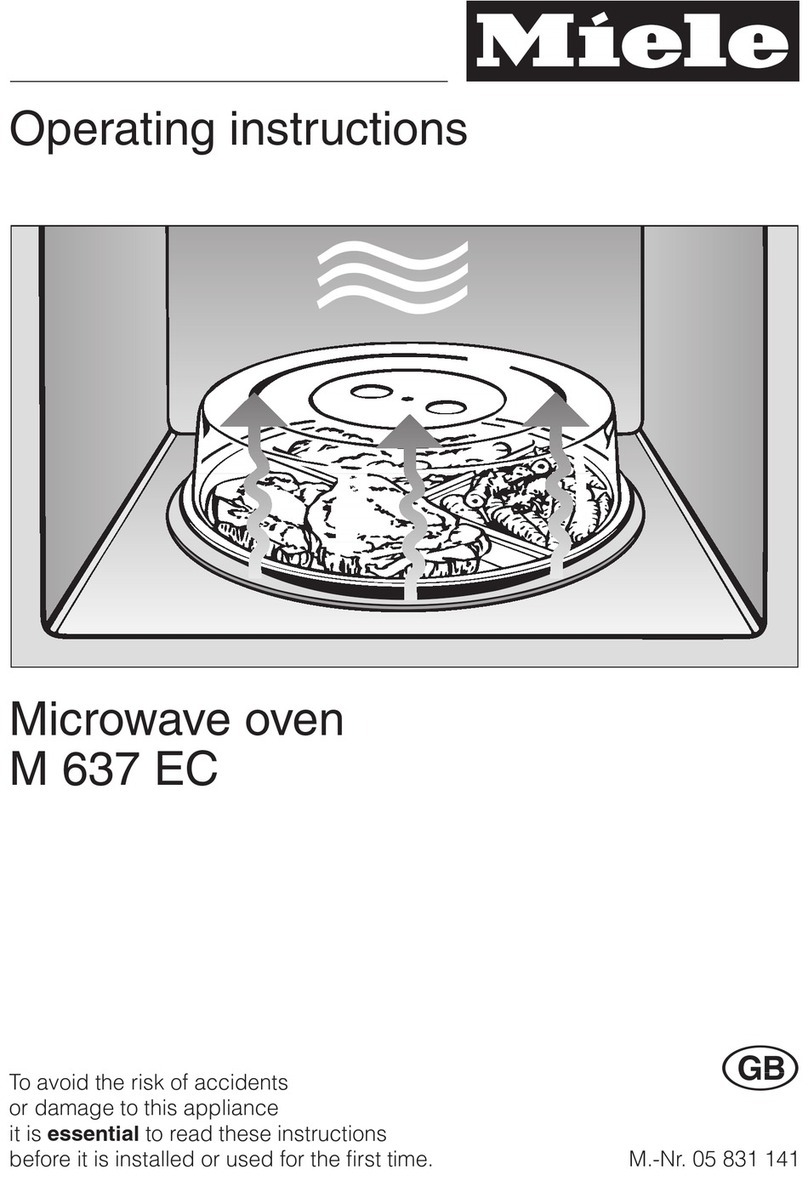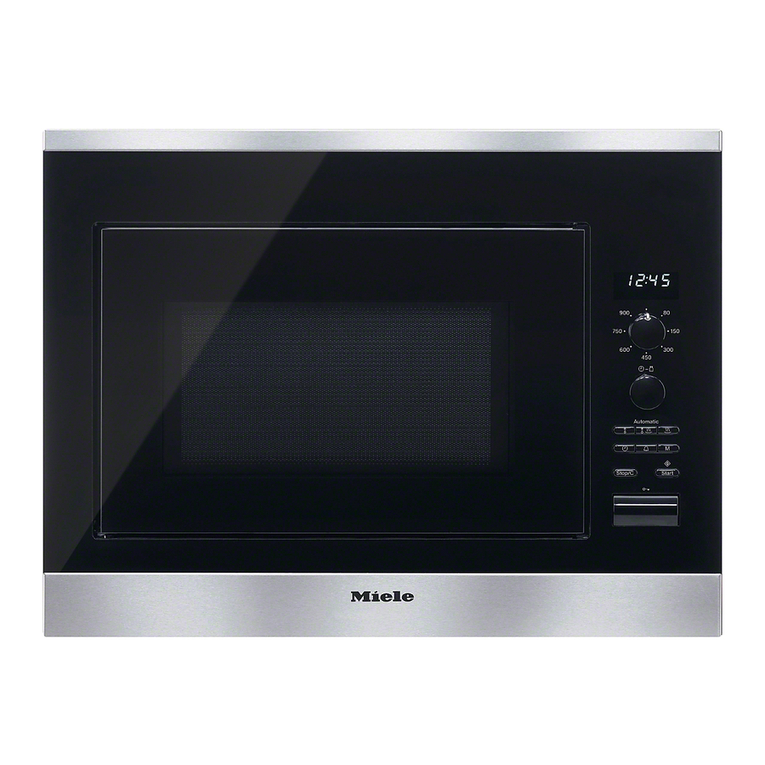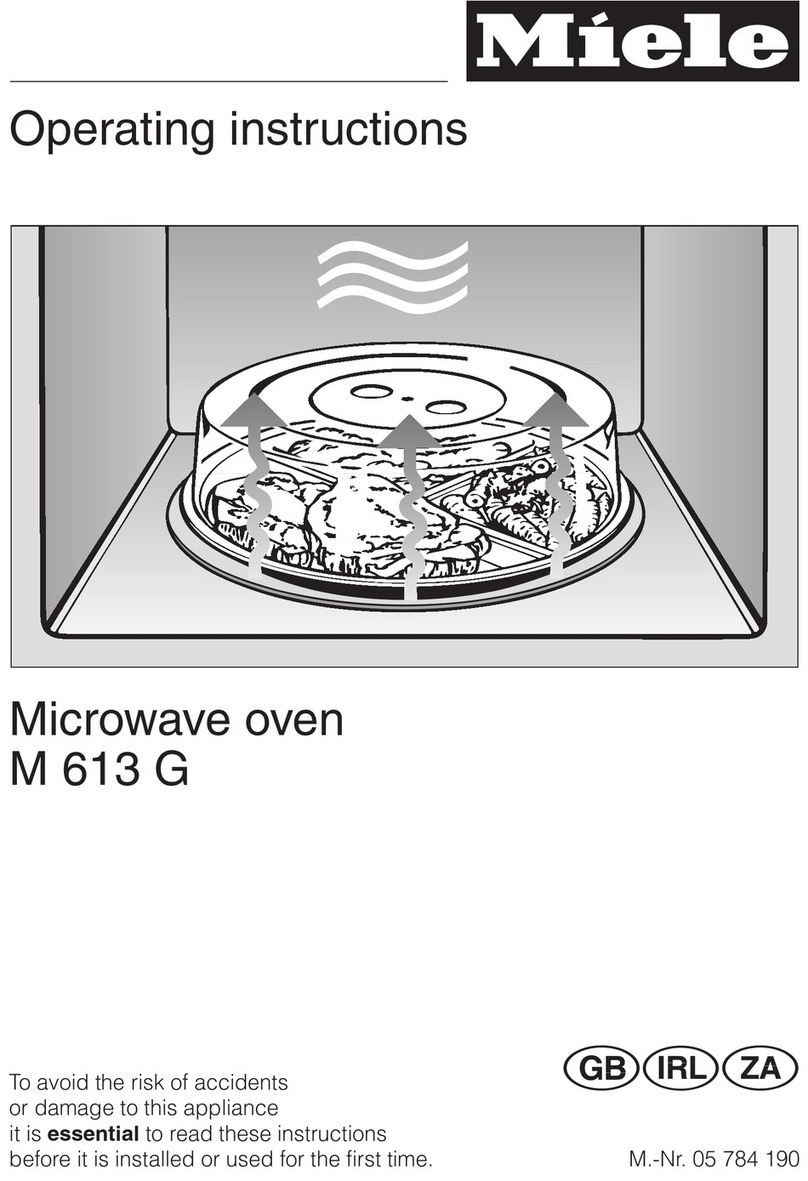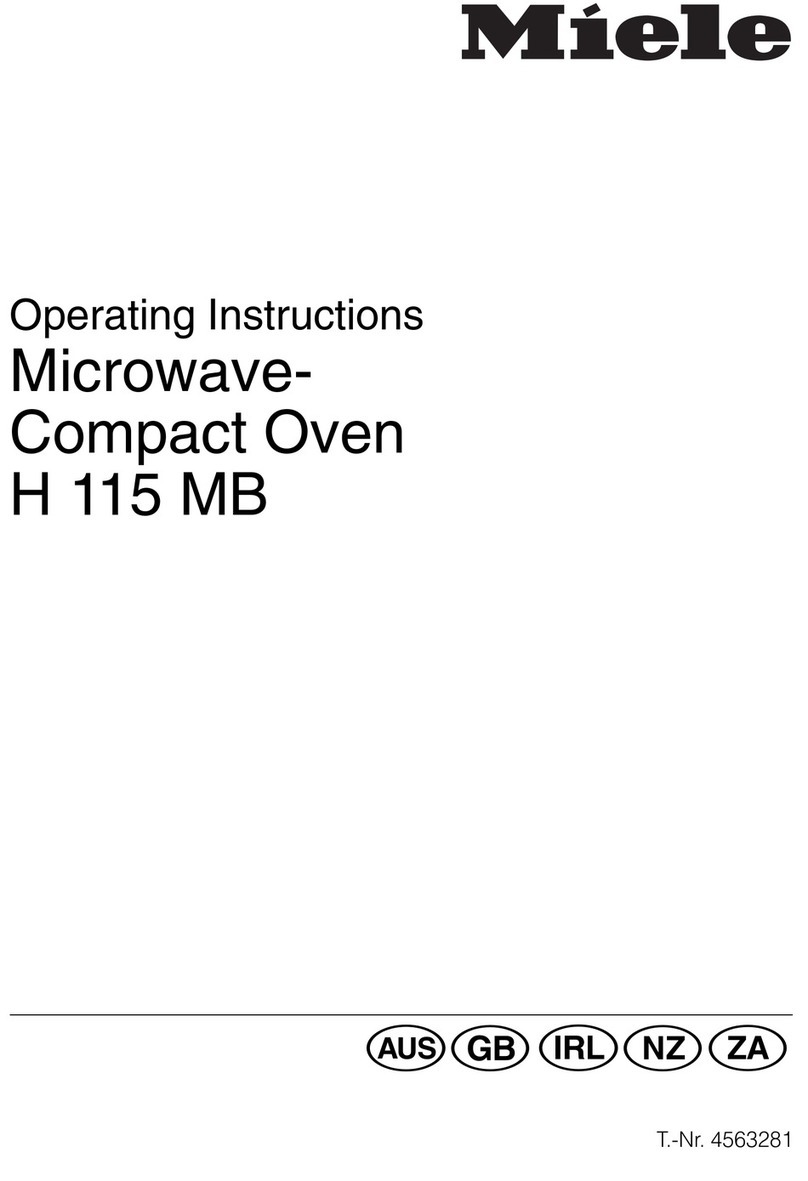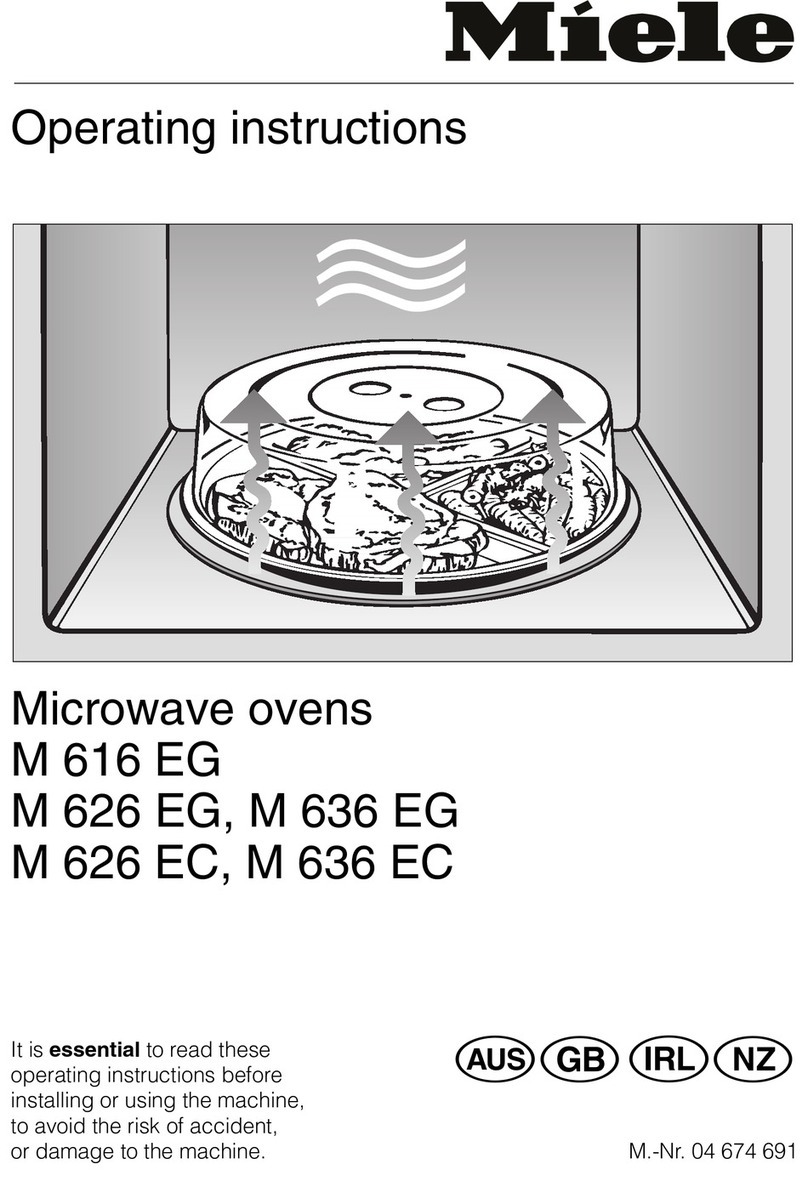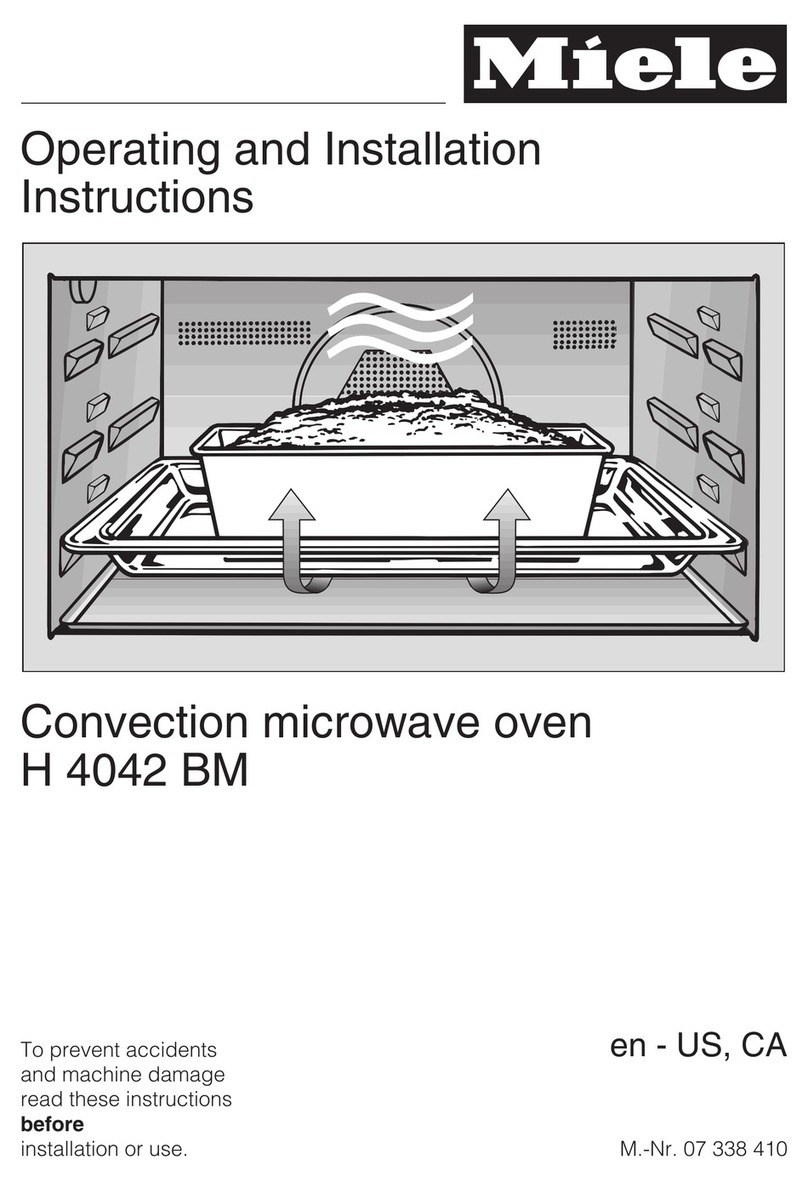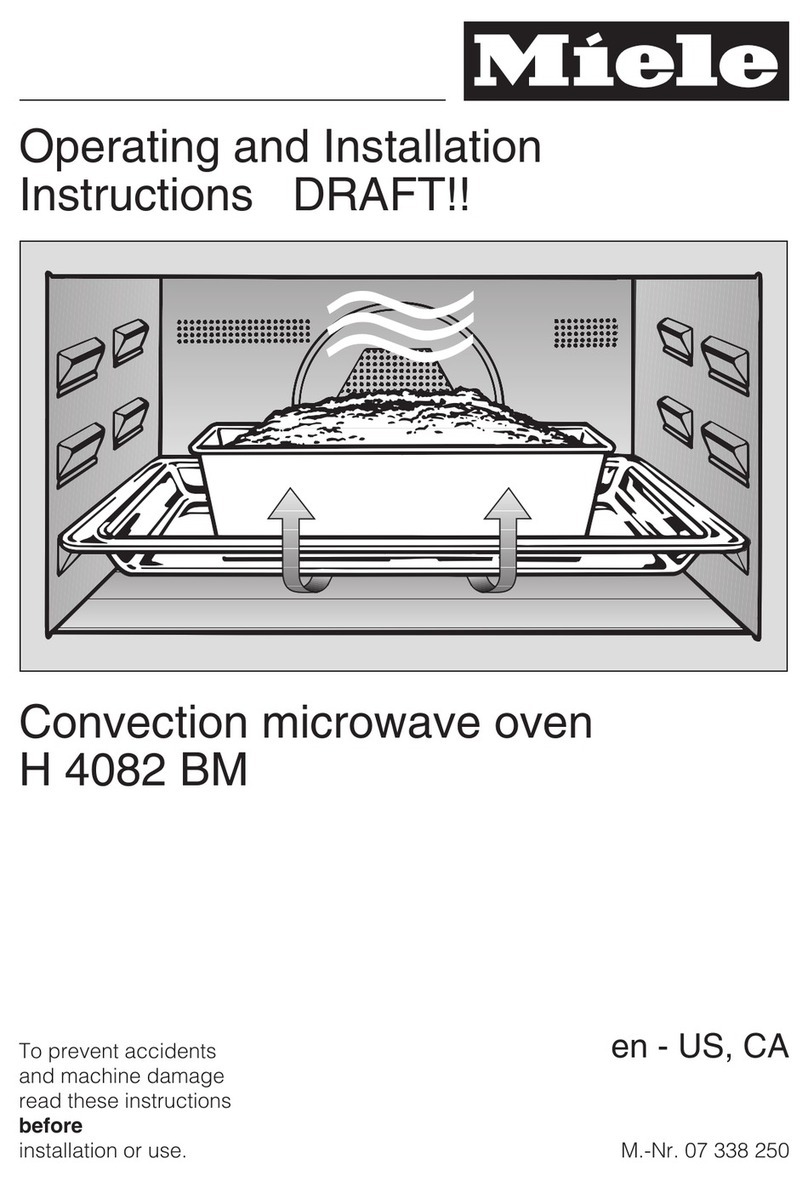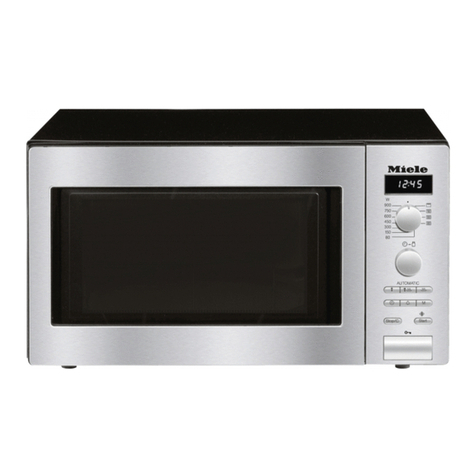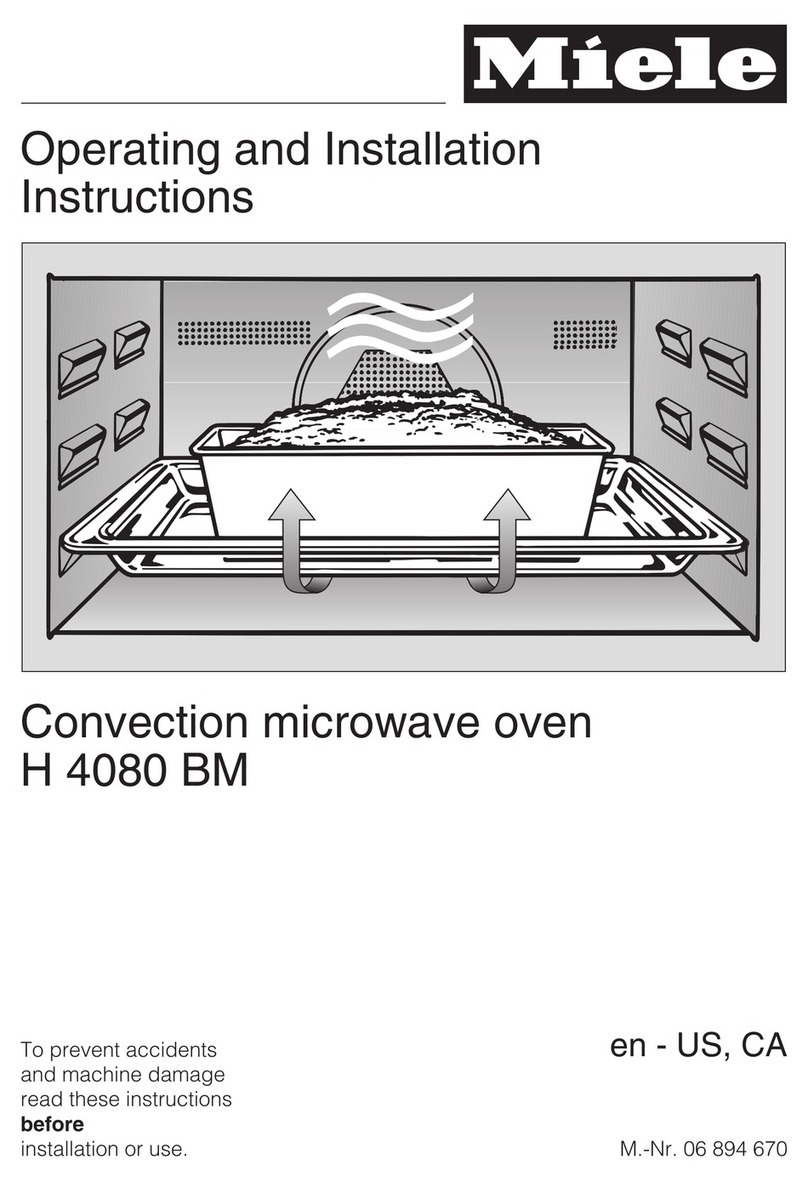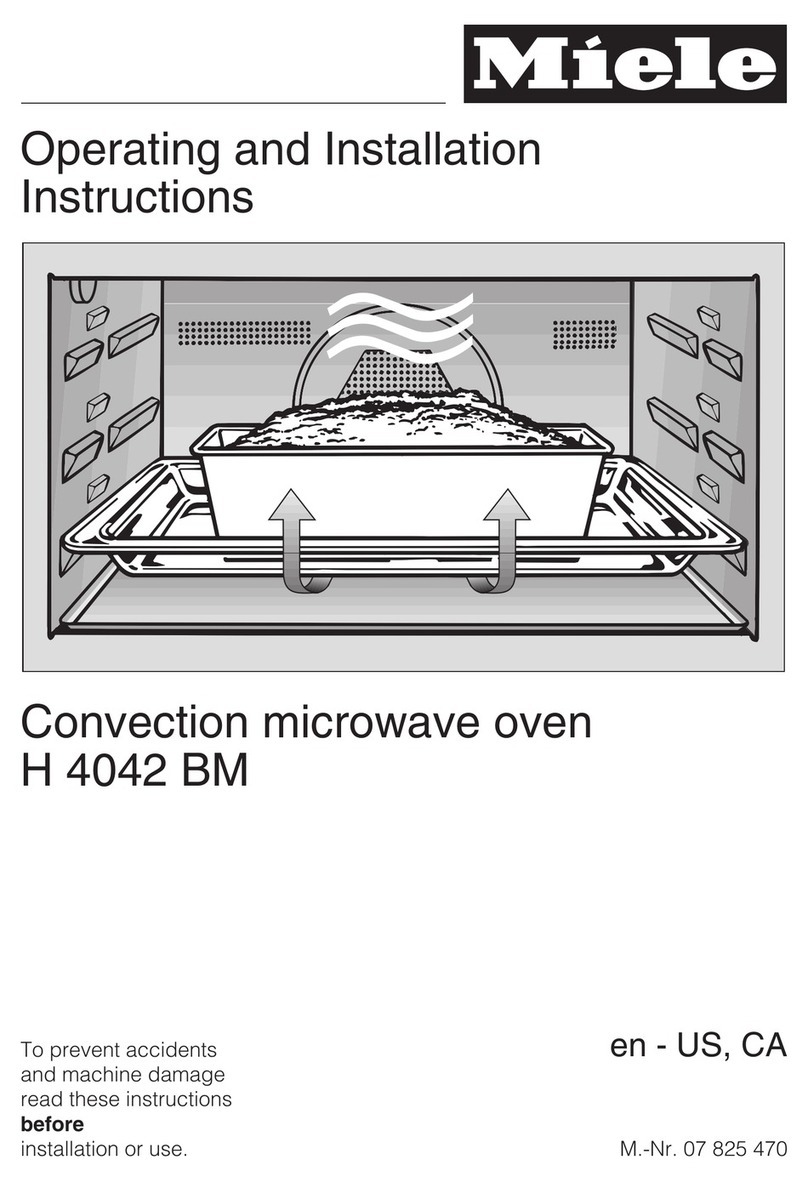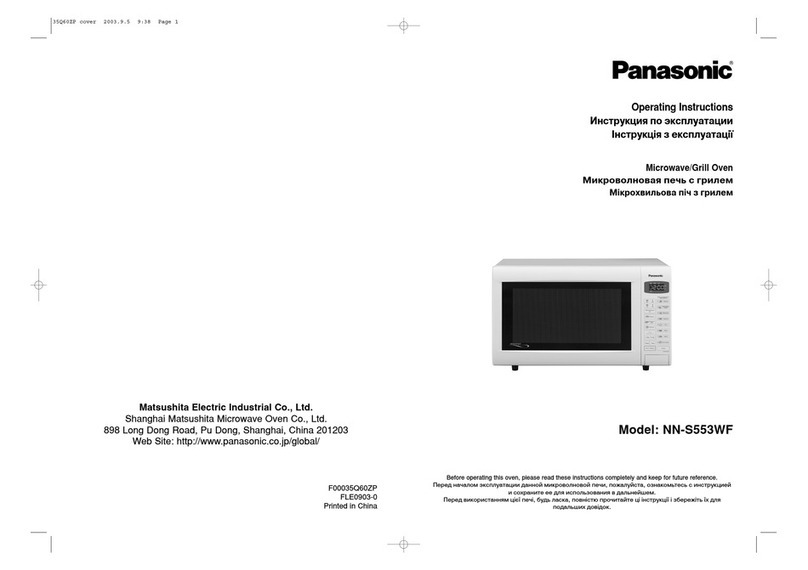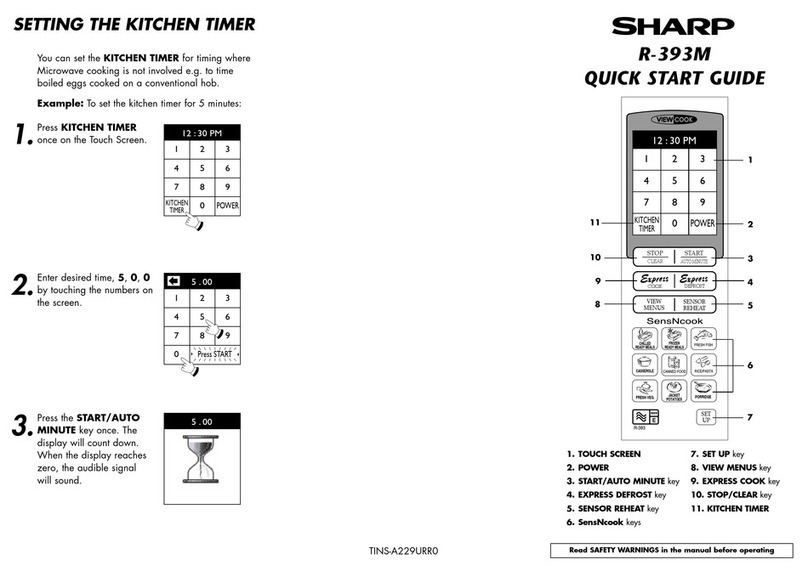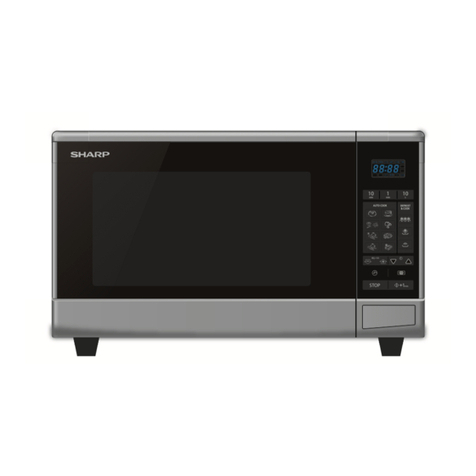The appliance must only be
operated after it has been correctly
installed in cabinetry. This is necessary
to ensure that all electrical components
are shielded.
This appliance is not designed for
maritime use or for use in mobile
installations such as recreational
vehicles or aircraft. However, under
certain conditions it may be possible for
an installation in these applications.
Please contact the Miele Technical
Service Department with specific
requirements.
Before service or maintenance
work the power supply must be
disconnected.
If the electrical cord is damaged it
must be replaced by a Miele
Service technician with a genuine Miele
spare part.
Do not use an extension cord to
connect the appliance to electricity.
Do not open the casing of the
oven. Danger of electric shock!
Use
The appliance is intended for
domestic use only: defrosting,
heating, cooking, baking, roasting,
broiling and canning of food.
It is not designed for industrial or
laboratory use.
Do not use corrosive chemicals or
vapors in this appliance.
Do not use the appliance to store
or dehydrate flammable materials.
This is a fire hazard.
Do not use the oven to heat the
room. Due to the high temperatures
radiated, objects left near the oven
could catch fire.
Prevent children from touching the
appliance when in use.
Times for cooking, heating and
defrosting food in the microwave
are shorter than that of traditional
operation modes. Extensive
microwaving lead to dry food and
possible ignition. Fire hazard!
Do not use the microwave mode to
dry bread, bread rolls, flowers,
herbs, etc. Use the convection mode.
Do not heat cushions filled with
herbs, gel, etc. with the microwave
mode. The cushions could ignite even
when removed from the oven after
heating. This is a fire hazard.
IMPORTANT SAFETY INSTRUCTIONS
5


